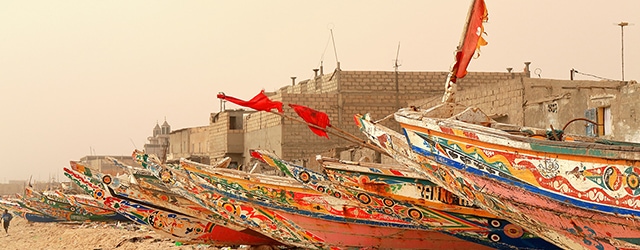Senegal enjoys a broad range of economic drivers, political stability and a long-range development plan designed to appeal to foreign investors.

|
SENEGAL: VITAL STATISTICS |
|---|
|
Location: Western Africa |
|
Neighbors: Mauritania, Mali, Guinea, Guinea-Bissau, The Gambia |
|
Capital city: Dakar |
|
Population (2019): 16,338,469 |
|
Official language: French |
|
GDP per capita (2018): US$1,522 |
|
GDP growth (2018): 6.8% |
|
Inflation (2018): 0.5% |
|
Currency: CFA Franc |
|
Investment promotion agency: Agency for the Promotion of Investment in Senegal |
|
Investment incentives available? Tax incentives; protection from nationalization; unlimited repatriation of funds; foreigners can have a 100% stake in a company |
|
Ease of Doing Business rank (2019): 141 |
|
Corruption Perceptions Index rank (2018): 67 |
|
Political risks: Oil scandal continues to overhang the political scene |
|
Security risks: Some possibility of terrorism in Basse-Casamance and other areas; reports of landmines; some road travel not safe due to armed robbers, notably near the border with The Gambia and Guinea-Bissau |
|
PROS |
|---|
|
Eligible for trade preferences through the African Growth and Opportunity Act |
|
One of 12 African countries in the G20 Compact with Africa |
|
CONS |
|---|
|
Risk of Zika virus |
|
Roads can be impassable during rainy season, between June and October in the north and from May to October in the south |
|
Illegal cross-border transit of people and goods |
|
Deforestation |
|
Poaching |
|
Sources: Africa Intelligence, allAfrica, Deloitte, GhanaWeb, Government of Canada Travel Advisory, International Monetary Fund, Moody’s Investors Service, Reuters, US Government Travel Advisory, US State Department, World Bank, World Population Review |
|
For more information, check out Global Finance‘s Senegal Economic Report data page. |
The first thing for foreign investors to know about Senegal is that it is not a single-commodity-driven developing economy. “The backbone of the economy is a combination of mining, construction and services, really dominated by transport,” says Janine Dow, head of Francophone African Banking at Fitch Ratings in Tunis.
Coupled with a relatively stable currency and political environment, this diversity boosts Senegal’s credit profile—currently Ba3 (Stable) from Moody’s. Fitch expects the Senegalese economy to grow by an estimated 6.6% annually until 2020.
That growth will be driven in part by the Emerging Senegal Plan (ESP), launched in 2012 and focused on fiscal consolidation, economic diversification, investment in education and public infrastructure, such as roads and power. A slate of reforms is expected to attract increased foreign direct investment and, with it, an uptick in the volume and diversity of exports.
The ESP includes ambitious plans focusing on four sectors: agriculture and land, information and communications technology, transport, and energy.
Senegal currently has the highest cost of electricity in sub-Saharan Africa, according to a 2017 Deloitte report, Invest in Senegal, and rural access to electricity remains below 50%. Senegal aims to electrify the entire country by 2025. Financial and technical support comes from the World Bank, the European Commission, the Japanese government and other institutions.
Senegal’s monetary policy is designed to bolster the twin objectives of economic stability and growth, according to Deloitte. That’s in keeping with the Central Bank of West African States’ goal of reducing inflation and maintaining the stability of the West African CFA franc, the common currency of Senegal and seven other countries in the region. The convertibility of the CFA franc to the euro at a fixed rate, guaranteed by the French government, providers reassurance to investors, facilitating credit lines.
Macroeconomic factors, including low inflation and stable growth, also provide a favorable environment for the Senegalese banking sector. Membership in the West African Economic and Monetary Union (WAEMU) ensures a stable currency, bolstered by bank reform. “There is a move towards international standards and measures, particularly on capital adequacy and risk classification,” Dow says.
The WAEMU situates Senegal in a common market with 112 million customers, as well as a regional securities market, the Regional Securities Exchange. The combination appeals to foreign investors, who have increased net investment inflows from $276 million in 2012 to $629 million last year.
Senegal has its share of risks, including public debt topping 50% of GDP in 2018, which limits funds available for national priorities. That, in turn, weakens economic strength and competitiveness while the importance of agriculture—16.6% of GDP in 2018, up from 12.9% in 2011—exposes the country to environmental risks.
While the banking sector has shown strong deposit growth, credit growth is sluggish, says Dow. The financial sector is constrained by some structural barriers, according to Fitch’s analysis. Credit growth remains largely crowded out by larger holdings of government securities and loans. Moreover, financial transparency is relatively weak, which limits access to credit for small to medium-sized enterprises.



